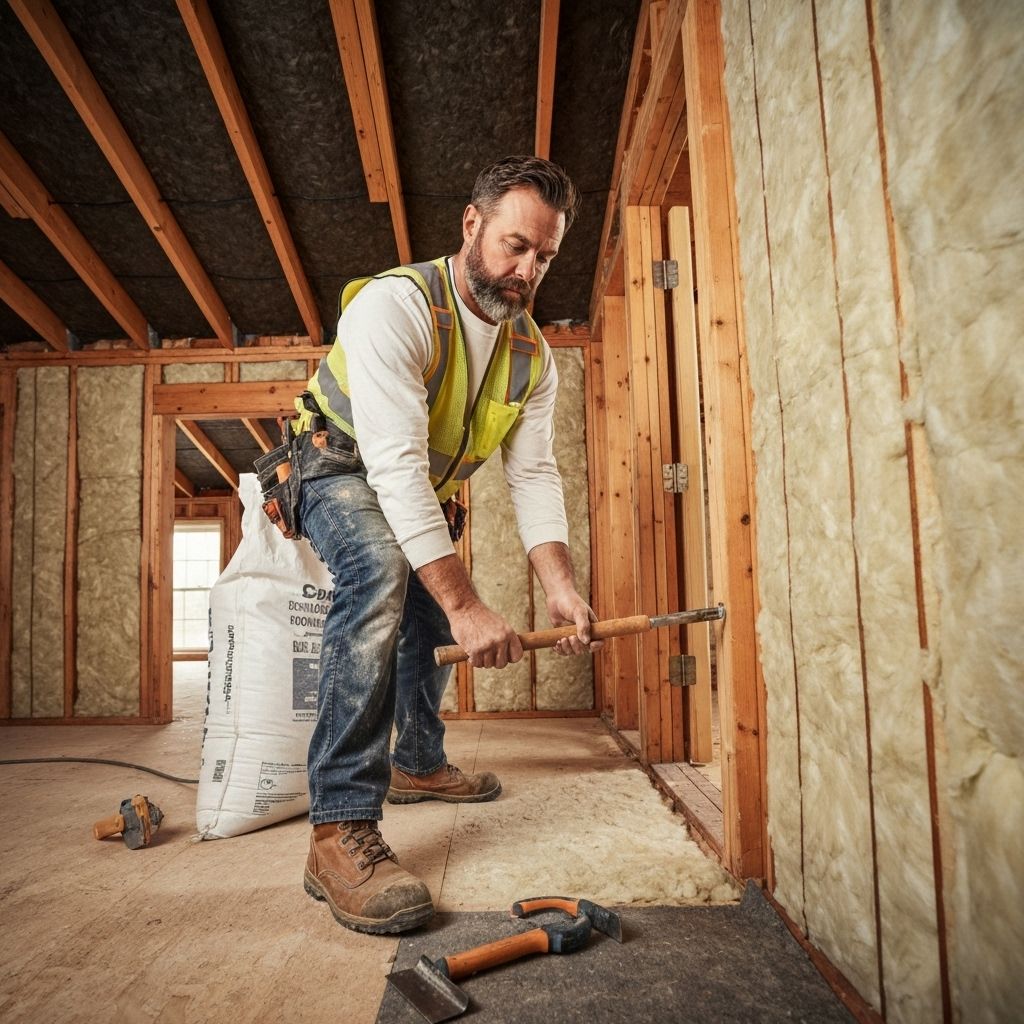Regarding designing a comfortable and efficient living space, proper insulation plays a crucial role. While many homeowners may overlook this aspect, the benefits of proper insulation extend far beyond just keeping a pleasant temperature indoors. In fact, eco-friendly insulation options are now appearing as environmentally-friendly choices that not only improve your home's energy efficiency but also support a healthier environment.
In this guide, we will investigate various aspects of home insulation, from understanding different types like batt and blown-in materials to checking if your current insulation is due for an upgrade. You will learn about the significance of R-values and how to air seal your home before undertaking any insulation projects. Whether you are tackling a DIY attic insulation job or aiming to better insulate your garage, our insights will assist you make wise decisions that align with your sustainability goals. Let’s dive into the world of eco-friendly insulation and uncover how these choices can advantage not only your home but also the planet.
Grasping Insulating Varieties
As selecting insulation for the home, it is important to comprehend the diverse types that exist and their unique properties. Insulation materials can commonly be categorized into three main types: batt, loose-fill, and foam spray. Batt insulation usually comes in preformed panels or rolls and is made from fibres or stone wool. It is simple to install for those looking to attempt a DIY project. Blown-in insulation, often made from cellulose or fiberglass, is suitable for filling irregular spaces and providing complete coverage in roofs and structures. Spray foam insulation is yet another popular option, recognized for its excellent air sealing properties and high R-values, which can provide superior thermal resistance.
Every insulation type has its own advantages and disadvantages. Batt insulation is often more inexpensive but can leave gaps if not placed correctly. insulation companies -in insulation provides better coverage but requires unique equipment for installation. Spray foam insulation, while typically more expensive, offers the highest performance in terms of sealing air leaks and increasing energy efficiency. It is important to evaluate these aspects based on the particular requirements of your home and the budget.
In addition to these main types, there are also various materials used for insulation, including fiberglass, plant fibers, spray foam, and solid foam sheets. Each material has unique properties that impact not only thermal performance but also elements like acoustic insulation, humidity control, and environmental impact. Grasping these variations can assist you make a wise decision, ensuring that your insulation choice matches with your objectives for energy efficiency, comfort, and sustainability in the home.
Insulation Placement and Upkeep
Installing thermal barriers in your house can significantly enhance energy efficiency and comfort. Correct installation is essential as gaps or compression can lessen the efficacy of insulation. Depending on the kind, insulation can be set in various areas, such as lofts, walls, and crawl spaces. Understanding the specific requirements of materials like batt, blown-in, or sprayed polyurethane foam is important. For do-it-yourselfers, using thorough guides can simplify the task, while employing specialists might be advantageous for complex installations.

Upkeep of insulation is commonly ignored but is critical to its enduring efficacy. Frequent reviews can assist pinpoint issues such as moisture buildup or pest infestations that can jeopardize insulation integrity. If https://pads.jeito.nl/-nHqrxGyQ6KZiGpxZdoYzw/ see signs of wear, such as sagging or mold growth, it is essential to address these issues promptly to avoid further harm. Additionally, guaranteeing that draft-proofing is done correctly can stop the entry of cold air that can inhibit insulation effectiveness.
For houses with installed insulation, keeping track of its age and function is important. Various materials have different operational times, and knowing when to upgrade or enhance insulation can result in significant savings on energy bills. Good maintenance does not only optimizes efficiency in energy use but also contributes to the quality of air inside, making your residence more welcoming and healthy.
Benefits of Effective Insulation
Efficient insulation has a crucial role in maintaining a pleasant home environment throughout the year. By minimizing temperature fluctuations, insulation aids keep your home heated in the winter and comfortable in the summer. This stability enhances overall comfort for you and your family, allowing you to enjoy your living spaces without the annoyance of drafts or excessive heat.
In furthermore to comfort, proper insulation also significantly reduces energy costs. With adequate insulation in place, your heating and cooling systems do not have to work as diligently to keep the desired temperature, leading to lower energy bills. This efficiency not only cuts you money but also supports to a more green lifestyle by lowering your home's overall energy consumption.
Finally, putting resources in efficient insulation can boost the worth of your home. Potential buyers are frequently drawn to homes that ensure energy efficiency and lower utility costs. Furthermore, effective insulation contributes to improved indoor air quality by limiting moisture buildup and preventing mold growth. Making insulation a key aspect in your home improvement projects not only delivers immediate benefits but also adds long-term value to your property.
